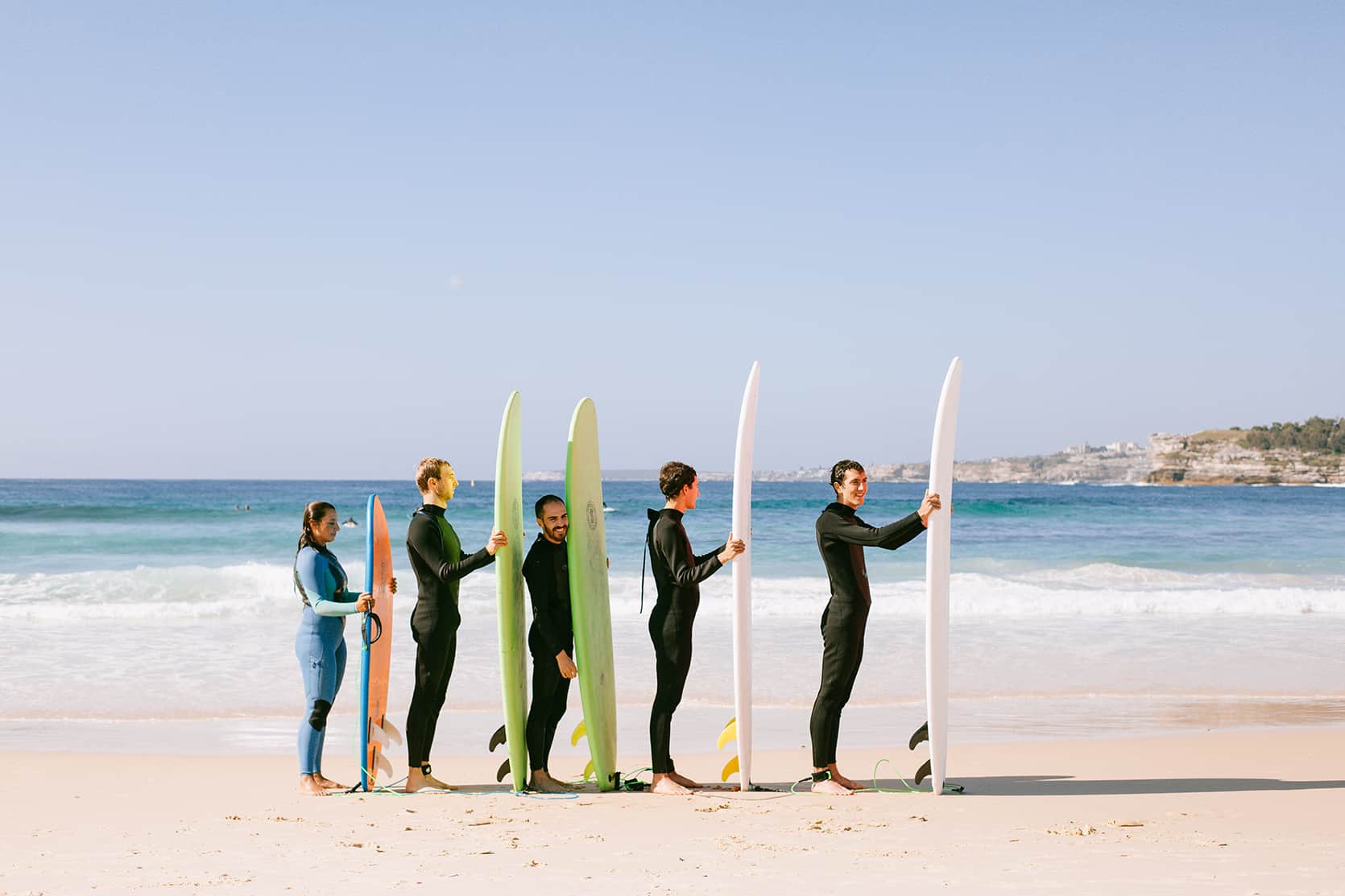Is it too late to grow my super?
March 20th 2019 | Categories: Superannuation & SMSF | Retirement | Financial Planning |

Almost a third of Australian pre-retirees don’t feel confident they’ll be in a comfortable financial position by the time they retire, according to Australian Unity.
If the same applies to you, you’re probably wondering what can be done now to ensure your retirement is stress-free. We spoke to Invest Blue Financial Planner Chris Ogilvie about his experiences helping Australians retire comfortably: “It’s never too late. There are a number of strategies to make the most of any situation – you just need to understand what’s going to work best for you.”
In this whitepaper, we’ll look at how your super balance compares to others, how much you’ll need for a comfortable retirement and what you can do to maximise your financial potential.
Understand how your decisions and actions today may affect your financial security tomorrow. Get in touch.
[ninja_form id=37]
Australian super goals: The numbers
There’s no one true minimum super balance to have a comfortable retirement. At the end of the day, the numbers you’ll need in your super depend on the kind of lifestyle you hope to live in your golden years.
The Association of Superannuation Funds of Australia (ASFA) estimates the necessary superannuation balance at retirement for two different lifestyles: comfortable and modest. For a comfortable lifestyle, ASFA reports a required balance of $640,000 for a couple or $545,000 for a single person, assuming you own your home and are 65 years of age at retirement and are in relatively good health. This also assumes retirees will draw down all their capital over the course of their retirement.
Meanwhile, a modest lifestyle calls for a balance of as little as $70,000 for couples or singles – heavily supported by the Age Pension.
The latest ASFA research shows that the average super balance at retirement in 2015-16 was $270,710 for men and $157,050 for women. It seems many Australians may be reaching retirement with enough money behind them to enjoy a slightly more-than-modest retirement, though might not be achieving all their later-life goals with their super income.
It is important to note that these estimates are based on a number of assumptions and will not take your personal situation, goals and aspirations into account. There is plenty of research out there highlighting the amount you need to afford retirement, but they all have a different perspective.
Take a look at Invest Blue’s Super and Savings Benchmarks to see how you compare to recent retirees and the ASFA Retirement Standards – are you on track to living the retirement lifestyle you dream of?
If not – it’s time to look for ways to maximise your super balance before you’re ready to retire.

1. Find your lost super
As of 30 June 2018, there were over 6.2 million super accounts lost or held by the Australian Taxation Office (ATO) totalling a staggering $17.5 billion in value, according to the ATO.
Super accounts can become lost when you change job, name or address. If your account doesn’t receive any contributions or rollovers in a 12-month period and your provider is unable to contact you, or if there have been no contributions in a five-year period, your account will be marked as lost.
Fortunately, Super need not be lost forever. You can track down lost super accounts by using ATO’s online services via myGov to see any accounts associated with you and consolidate funds into a single account.
2. Review your fund
As you’re approaching retirement, your appetite for risk is likely to decrease. This means you might consider more conservative investments for your super balance. “The period 5 years pre and post retirement is a critically important period as this is the point you are likely to have accumulated your largest retirement balances and are exposed therefore to maximum financial risk. Avoiding losses and consolidating your position is really important at this critical time.” reports Chris.
Choosing a low-risk fund at this stage means your super is less likely to suffer losses in the lead-up to your retirement. However, it typically also means you won’t see as great returns compared to a higher risk fund.
It’s important to take a look under the hood and consider the actual risk profile of a fund’s investments, rather than assuming based on the title of the fund. For example, while you may expect a Balanced fund to have an equal number of defensive and growth assets, the reality can be remarkably different depending on the provider’s own definition.
“Typically in financial planning, Balanced funds will be split with around 75 per cent growth assets and 25 per cent defensive assets – much different from the layman’s 50/50 expectation. What we’re seeing more and more these days is that industry supers are building Balanced funds with as much as 95 per cent growth assets,” explains Chris.
Up to this point, you may not have considered your appetite for risk and therefore haven’t reviewed your fund’s investments closely. Speaking to a financial planner gives you the clarity you need to work out your options.
“There’s definitely some reliance with super that your interest is being looked after, but what I’ve often seen with default funds, in particular, is that many are more geared towards the younger demographic with a high-risk profile,” says Chris. “When you sit down with a financial planner, there’s a much bigger conversation about the kind of risks and returns that are best for your situation.”

If you’d like some help comparing super funds and determining which is the right one for you, get in touch.
[ninja_form id=37]
3. Utilise your contribution caps and the catch-up cap
You have a range of options to move money into super prior to retirement to build your retirement nest egg and to take full advantage of the tax benefits available.
You can learn more about these ‘caps’ in our Super Basics article here.
From 1 July 2018, super savers have the option to carry unused concessional contributions allowances forward for up to five years, provided their balance is less than $500,000. This means if you plan to retire five years from now, you may be able to carry forward any remaining allowance from the past five years and top-up your super with tax-deductible contributions.
Beyond this, super accounts with a balance lower than $1.4 million may make non-concessional contributions up to a total $300,000 over a three year period.
These contribution allowances represent a great opportunity to consider moving personal investments into a tax-efficient environment and boost your super in time for a fulfilling retirement.
4. Consider a transition to retirement strategy (TTR)
TTR strategies may be beneficial to some with specific cash flow needs. These might include the repayment of pesky or high-interest debts, those seeking to supplement part-time work income or simply to tax effectively boost retirement savings.
By moving a portion of your super into an account-based pension and using it to supplement your income, you may be able to increase your salary sacrifice to utilise your full annual concessional contributions cap without lowering your take-home pay. This allows you to save money on income tax and boost your super while maintaining your current lifestyle. While this strategy is available as soon as you reach preservation age, it is more effective again for those over 60 as the pension income you draw is tax exempt.
Since 1 July 2017, any investment returns on TTR pensions are taxed at 15 per cent, just as they are in the accumulation phase. This means TTR may not make as significant a change to your super as it once would have – but it may still prove a valuable strategy depending on your situation.
“Previously a TTR strategy was a really strong strategy for a lot of people,” explains Chris. “Now, it’s really something that should be considered carefully. A recent client of mine was working part-time, a few years away from retiring, and planned to downsize to fund her retirement. But until she could reach that stage, she didn’t have enough income to really live the life she wanted to live. With a TTR strategy, she’s been able to draw from her super, go traveling, keep working and really enjoy the years until she’s ready to ultimately make a downsizer contribution to super. So, while she isn’t growing her super now, the TTR strategy is helping her bridge the gap between her current and desired lifestyle and to prioritise what is important for her over the coming years.

5. Downsize for a bigger retirement
Topping up your super when downsizing after retirement is another option worth considering.
As of 1 July 2018, eligible retirees over 65 are able to contribute up to $300,000 of the proceeds from the sale of their family home into their super account, on the proviso the house has been lived in for in excess of 15 years. This contribution doesn’t count toward your non-concessional cap, and both you and your partner are entitled to the same allowance each. It’s worth noting that these contributions will affect your eligibility to receive the Age Pension, so this decision must be carefully considered.
This means that for many over the age of 65 – that there is now a window to top up your super if you meet the criteria. For many, it provides an opportunity that was previously not available, a second chance to catch up or boost your super after your work life has finished.
6. Seek professional advice
Growing your super in the few years before retirement is challenging if you go it alone. The best way to prepare yourself for a fulfilling and vibrant retirement is to speak to a licensed financial planner today. With your goals and situation front-of-mind, a financial planner will find the most appropriate strategy for you and your retirement.
“There’s often a trigger event that gets people thinking about their retirement,” says Chris. “So often, they’ve not thought about it until it’s only a few years away and they need guidance to make it work. The rules are so complex, but a financial planner can really bring anyone from that point of self-awareness, furnish them with the concepts they need to make a positive change and then lead them down that path.”
Don’t hesitate to seek advice – reach out to us for a chat. Our first meeting is a chance for us all to get to know each other and discuss your needs so we can see if we can help.
[ninja_form id=41]
What you need to know
This information is provided by Invest Blue Pty Ltd (ABN 91 100 874 744). The information contained in this article is of general nature only and does not take into account the objectives, financial situation or needs of any particular person. Therefore, before making any decision, you should consider the appropriateness of the advice with regards to those matters and seek personal financial, tax and/or legal advice prior to acting on this information. Read our Financial Services Guide for information about our services, including the fees and other benefits that AMP companies and their representatives may receive in relations to products and services provided to you. https://www.apa.org/pubs/highlights/peeps/issue-105.aspx https://www.behavioraleconomics.com/resources/introduction-behavioral-economics/
Posted in Superannuation & SMSF, Retirement, Financial Planning
